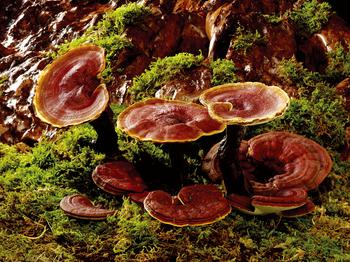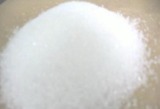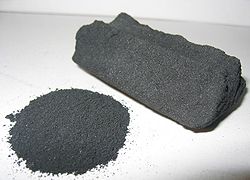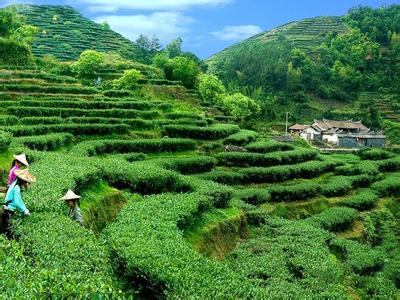- Basic Chemicals
- Medicine raw material
- Food Additives
- Amino Acid
- Plant Isolation
- Plant Polysaccharide
- P lant flavone
- Plant saponins
- Plant Polyphenols
- Anthocyanins
- Activated carbon
- CLOTH
- Medical Device
A tannin (also known as vegetable tannin, natural organic tannins or sometimes tannoid, i.e. a type of biomolecule, as opposed to modern synthetic tannin) is an astringent, bitter plant polyphenolic compound that binds to and precipitates proteins and various other organic compounds including amino acids and alkaloids.
The term tannin (from tanna, an Old High German word for oak or fir tree, as in Tannenbaum) refers to the use of wood tannins from oak in tanning animal hides into leather; hence the words "tan" and "tanning" for the treatment of leather. However, the term "tannin" by extension is widely applied to any large polyphenolic compound containing sufficient hydroxyls and other suitable groups (such as carboxyls) to form strong complexes with various macromolecules.
The tannin compounds are widely distributed in many species of plants, where they play a role in protection from predation, and perhaps also as pesticides, and in plant growth regulation.[1] The astringency from the tannins is what causes the dry and puckery feeling in the mouth following the consumption of unripened fruit or red wine.[2] Likewise, the destruction or modification of tannins with time plays an important role in the ripening of fruit and the aging of wine.
Tannins have molecular weights ranging from 500 to over 3,000[3] (gallic acid esters) and up to 20,000 (proanthocyanidins).
Contents
[hide]Structure and classes of tannins[edit]
There are three major classes of tannins:[4] Shown below are the base unit or monomer of the tannin. Particularly in the flavone-derived tannins, the base shown must be (additionally) heavily hydroxylated and polymerized in order to give the high molecular weight polyphenol motif that characterizes tannins. Typically, tannin molecules require at least 12 hydroxyl groups and at least five phenyl groups to function as protein binders.
| Base Unit: |
 Gallic acid |
 Flavone |
 Phloroglucinol |
|---|---|---|---|
| Class/Polymer: | Hydrolyzable tannins |
Non-Hydrolyzable or condensed tannins |
Phlorotannins |
| Sources | Plants | Plants | Brown algae |
Oligostilbenoids (oligo- or polystilbenes) are oligomeric forms of stilbenoids and constitute a class of tannins.[5]
Pseudo tannins[edit]
Pseudo tannins are low molecular weight compounds associated with other compounds. They do not change color during the Goldbeater's skin test, unlike hydrolysable and condensed tannins, and cannot be used as tanning compounds.[4] Some examples of pseudo tannins and their sources are:[6]
| Pseudo tannin | Source(s) |
|---|---|
| Gallic acid | Rhubarb |
| Flavan-3-ols (Catechins) | Tea, acacia, catechu, cocoa, guarana |
| Chlorogenic acid | Nux-vomica, coffee, mate |
| Ipecacuanhic acid | Carapichea ipecacuanha |
History[edit]
Ellagic acid, gallic acid, and pyrogallic acid were first discovered by chemist Henri Braconnot in 1831.[7]:20 Julius Löwe was the first person to synthesize ellagic acid by heating gallic acid with arsenic acid or silver oxide.[7]:20 [8]
Maximilian Nierenstein studied natural phenols and tannins[9] found in different plant species. Working with Arthur George Perkin, he prepared ellagic acid fromalgarobilla and certain other fruits in 1905.[10] He suggested its formation from galloyl-glycine by Penicillium in 1915.[11] Tannase is an enzyme that Nierenstein used to produce m-digallic acid from gallotannins.[12] He proved the presence of catechin in cocoa beans in 1931.[13] He showed in 1945 that luteic acid, a molecule present in the myrobalanitannin, a tannin found in the fruit of Terminalia chebula, is an intermediary compound in the synthesis of ellagic acid.[14]
At these times, molecule formulas were determined through combustion analysis.[citation needed] The discovery in 1943 by Martin and Synge of paper chromatographyprovided for the first time the means of surveying the phenolic constituents of plants and for their separation and identification.[citation needed] There was an explosion of activity in this field after 1945, none more so than that of Edgar Charles Bate-Smith and Tony Swain[15] at Cambridge University.
In 1966, Edwin Haslam proposed a first comprehensive definition of plant polyphenols based on the earlier proposals of Bate-Smith, Swain and White, which includes specific structural characteristics common to all phenolics having a tanning property. It is referred to as the White–Bate-Smith–Swain–Haslam (WBSSH) definition.[16]
Occurrence[edit]
Tannins are distributed in species throughout the plant kingdom. They are commonly found in both gymnosperms as well as angiosperms. Mole[17] (1993) studied the distribution of tannin in 180 families of dicotyledons and 44 families of monocotyledons (Cronquist). Most families of dicot contain tannin-free species (tested by their ability to precipitate proteins).
The best known families of which all species tested contain tannin are: Aceraceae, Actinidiaceae, Anacardiaceae, Bixaceae, Burseraceae, Combretaceae,Dipterocarpaceae, Ericaceae, Grossulariaceae, Myricaceae for dicot and Najadaceae and Typhaceae in Monocot. To the family of the oak, Fagaceae, 73% of the species tested (N = 22) contain tannin. For those of acacias, Mimosaceae, only 39% of the species tested (N = 28) contain tannin, among Solanaceae rate drops to 6% and 4% for the Asteraceae. Some families like the Boraginaceae, Cucurbitaceae, Papaveraceae contain no tannin-rich species.
The most abundant polyphenols are the condensed tannins, found in virtually all families of plants, and comprising up to 50% of the dry weight of leaves. Tannins of tropical woods tend to be of a cathetic nature rather than of the gallic type present in temperate woods.[18]
There may be a loss in the bio-availability of still other tannins in plants due to birds, pests, and other pathogens.[19]
Localization in plant organs[edit]
Tannins are found in leaf, bud, seed, root, and stem tissues. An example of the location of the tannins in stem tissue is that they are often found in the growth areas of trees, such as the secondary phloem and xylem and the layer between the cortex and epidermis. Tannins may help regulate the growth of these tissues.
Cellular localization[edit]
In all vascular plants studied so far, tannins are manufactured by a chloroplast-derived organelle, the tannosome.[20] Tannins are mainly physically located in thevacuoles or surface wax of plants. These storage sites keep tannins active against plant predators, but also keep some tannins from affecting plant metabolism while the plant tissue is alive; it is only after cell breakdown and death that the tannins are active in metabolic effects.
Tannins are classified as ergastic substances, i.e., non-protoplasm materials found in cells. Tannins, by definition, precipitate proteins. In this condition, they must be stored in organelles able to withstand the protein precipitation process. Idioblasts are isolated plant cells which differ from neighboring tissues and contain non-living substances. They have various functions such as storage of reserves, excretory materials, pigments, and minerals. They could contain oil, latex, gum, resin or pigments etc. They also can contain tannins. In Japanese persimmon (Diospyros kaki) fruits, tannin is accumulated in the vacuole of tannin cells, which are idioblasts of parenchyma cells in the flesh.[21]
Presence in soils[edit]
The convergent evolution of tannin-rich plant communities has occurred on nutrient-poor acidic soils throughout the world. Tannins were once believed to function as anti-herbivore defenses, but more and more ecologists now recognize them as important controllers of decomposition and nitrogen cycling processes. As concern grows about global warming, there is great interest to better understand the role of polyphenols as regulators of carbon cycling, in particular in northern boreal forests.
Leaf litter and other decaying parts of a kauri (Agathis australis), a tree species found in New Zealand, decompose much more slowly than those of most other species. Besides its acidity, the plant also bears substances such as waxes and phenols, most notably tannins,[22] that are harmful to microorganisms.
Presence in water and wood[edit]
The leaching of highly water soluble tannins from decaying vegetation and leaves along a stream may produce what is known as a blackwater river. Water flowing out of bogs has a characteristic brown color from dissolved peat tannins. The presence of tannins (or humic acid) in well water can make it smell bad or taste bitter, but this does not make it unsafe to drink.[23]
Tannins leaching from an unprepared driftwood decoration in an aquarium can cause pH lowering and coloring of the water to a tea-like tinge. A way to avoid this is to boil the wood in water several times, discarding the water each time. Using peat as anaquarium substrate can have the same effect.
Many hours of boiling the driftwood may need to be followed by many weeks or months of constant soaking and many water changes before the water will stay clear. Addingbaking soda to the water to raise its pH level will accelerate the process of leaching, as the more alkaline solution can draw out tannic acid from the wood faster than the pH-neutral water.[24]
Softwoods, while in general much lower in tannins than hardwoods,[25] are usually not recommended for use in an aquarium[26]so using a hardwood with a very light color, indicating a low tannin content, can be an easy way to avoid tannins. Tannic acid is brown in color, so in general white woods have a low tannin content. Woods with a lot of yellow, red, or brown coloration to them (like southern yellow pine, cedar, redwood, red oak, etc.) tend to contain a lot of tannin.[27]
Extraction[edit]
There is no single protocol for extracting tannins from all plant material. The procedures used for tannins are widely variable.[28] It may be that acetone in the extraction solvent increases the total yield by inhibiting interactions between tannins and proteins during extraction[28] or even by breaking hydrogen bonds between tannin-protein complexes.[29]
Tests for tannins[edit]
There are three groups of methods for the analysis of tannins: precipitation of proteins or alkaloids, reaction with phenolic rings, and depolymerization.[30]
Goldbeater's skin testWhen goldbeater's skin or ox skin is dipped in HCl and treated with 1% FeSO4 solution, it gives a blue black color, after washing with water.
Ferric chloride (FeCl3) testIt is rather a test for phenolics in general. Powdered plant leaves of the test plant (1.0 g) are weighed into a beaker and 10 ml of distilled water are added. The mixture is boiled for five minutes. Two drops of 5% FeCl3 are then added. Production of a greenish precipitate was an indication of the presence of tannins.[31] Alternatively, a portion of the water extract is diluted with distilled water in a ratio of 1:4 and few drops of 10% ferric chloride solution is added. A blue or green color indicates the presence of tannins (Evans, 1989).[32]
Other methodsThe hide-powder method is used in tannin analysis for leather tannin and the Stiasny method for wood adhesives.[33][34] Statistical analysis reveals that there is no significant relationship between the results from the hide-powder and the Stiasny methods.[35][36]
hide-powder method400 mg of sample tannins are dissolved in 100 ml of distilled water. 3 g of slightly chromated hide-powder previously dried in vacuum for 24h over CaCl2 are added and the mixture stirred for 1 h at ambient temperature. The suspension is filtered without vacuum through a sintered glass filter. The weight gain of the hide-powder expressed as a percentage of the weight of the starting material is equated to the percentage of tannin in the sample.
Stiasny's method100 mg of sample tannins are dissolved in 10 ml distilled water. 1 ml of 10M HCl and 2 ml of 37% formaldehyde are added and the mixture heated under reflux for 30 min. The reaction mixture is filtered while hot through a sintered glass filter. The precipitate is washed with hot water (5x 10 ml) and dried over CaCl2. The yield of tannin is expressed as a percentage of the weight of the starting material.
Reaction with phenolic rings[edit]
The bark tannins of Commiphora angolensis have been revealed by the usual color and precipitation reactions and by quantitative determination by the methods of Löwenthal-Procter and of Deijs[37] (formalin-hydrochloric acid method).[38]
Colorimetric methods have existed such as the Neubauer-Löwenthal method which uses potassium permanganate as an oxidizing agent and indigo sulfate as an indicator, originally proposed by Löwenthal in 1877.[39] The difficulty is that the establishing of a titer for tannin is not always convenient since it is extremely difficult to obtain the pure tannin. Neubauer proposed to remove this difficulty by establishing the titer not with regard to the tannin but with regard to crystallised oxalic acid, whereby he found that 83 g oxalic acid correspond to 41.20 g tannin. Löwenthal's method has been criticized. For instance, the amount of indigo used is not sufficient to retard noticeably the oxidation of the non-tannins substances. The results obtained by this method are therefore only comparative.[40][41] A modified method, proposed in 1903 for the quantification of tannins in wine, Feldmann's method, is making use of calcium hypochlorite, instead of potassium permanganate, and indigo sulfate.[42][43]
Nutrition[edit]
Tannins have traditionally been considered antinutritional but it is now known that their beneficial or antinutritional properties depend upon their chemical structure and dosage. The new technologies used to analyze molecular and chemical structures have shown that a division into condensed and hydrolyzable tannins is far too simplistic.[44] Recent studies have demonstrated that products containing chestnut tannins included at low dosages (0.15–0.2%) in the diet of chickens may be beneficial.[45] Some studies suggest that chestnut tannins have been shown to have positive effects on silage quality in the round bale silages, in particular reducingNPNs (non protein nitrogen) in the lowest wilting level.[46] Improved fermentability of soya meal nitrogen in the rumen has also been reported by F. Mathieu and J. P. Jouany (1993).[47] Studies by S. Gonzalez et al. (2002)[48] on in vitro ammonia release and dry matter degradation of soybean meal comparing three different types of tannins (quebracho, acacia and chestnut) demonstrated that chestnut tannins are more efficient in protecting soybean meal from in vitro degradation by rumen bacteria.
Condensed tannins inhibit herbivore digestion by binding to consumed plant proteins and making them more difficult for animals to digest, and by interfering with protein absorption and digestive enzymes (for more on that topic, see plant defense against herbivory). Many tannin-consuming animals secrete a tannin-binding protein (mucin) in their saliva. Tannin-binding capacity of salivary mucin is directly related to its proline content. Advantages in using salivary proline-rich proteins (PRPs) to inactivate tannins are:
- PRPs inactivate tannins to a greater extent than do dietary proteins; this results in reduced fecal nitrogen losses
- PRPs contain non specific nitrogen and nonessential amino acids; this makes them more convenient for an animal to exploit rather than using up valuable dietary protein
Drinks with tannins[edit]
The best-known human dietary sources of tannins are tea and wine.[citation needed] Other sources include fruit juices, but not citrus.[citation needed]
Coffee pulp has been found to contain low to trace amounts of tannins.[49]
Fruit juices[edit]
Although citrus fruits do not themselves contain tannins, orange-colored juices often contain food dyes with tannins.[citation needed] Apple juice, grape juices and berry juices are all high in tannins.[citation needed] Sometimes tannins are even added to juices and ciders to create a more astringent feel to the taste.[citation needed]
Beer[edit]
In addition to the alpha acids extracted from hops to provide bitterness in beer, condensed tannins are also present. These originate both from the malt and hops.[citation needed] Especially in Germany, trained brewmasters consider the presence of tannins as a flaw.[citation needed] In some styles, the presence of this astringency is acceptable or even desired, as, for example, in a Flanders red ale.[citation needed]
In lager type beers, the tannins can form a precipitate with specific haze-forming proteins in the beer resulting in turbidity at low temperature. This chill haze can be prevented by removing part of the tannins or part of the haze-forming proteins. Tannins are removed using PVPP, haze-forming proteins by using silica or tannic acid.[50]
Food items with tannins[edit]
Fruits[edit]
Pomegranates[edit]
Persimmons[edit]
Some persimmons are highly astringent and therefore inedible when they are not extremely ripe (to be specific, the Korean, American, and Hachiya or Japanese).[citation needed]
Berries[edit]
Most berries, such as cranberries,[51] strawberries and blueberries,[52] contain both hydrolyzable and condensed tannins.
Nuts[edit]
Nuts that can be consumed raw, such as hazelnuts, walnuts, and pecans, contain high amounts of tannins. Almonds have a lower content. Tannin concentration in the crude extract of these nuts did not directly translate to the same relationships for the condensed fraction.[53] Acorns contain such high concentrations of tannins that they must be processed before they can be consumed safely.
The areca nut also contains tannin.[citation needed]
Smoked foods[edit]
Tannins from the wood of mesquite, cherry, oak, and other woods used in smoking are present on the surface of smoked fish and meat.[citation needed]
Herbs and spices[edit]
Cloves, tarragon, cumin, thyme, vanilla, and cinnamon all contain tannins.[54]
Legumes[edit]
Most legumes contain tannins. Red-colored beans contain the most tannins, and white-colored beans have the least. Peanuts without shells have a very low tannin content. Chickpeas (garbanzo beans) have a smaller amount of tannins.[55]
Chocolate[edit]
Chocolate liquor contains about 6% tannins.[56]
Health effects of tannins[edit]
Tannin market[edit]
Tannin production began at the beginning of the 19th century with the industrial revolution, to produce tanning material for the need for more leather. Before that time, processes used plant material and were long (up to six months).
There was a collapse in the vegetable tannin market in the 1950s–1960s, due to the appearance of synthetic tannins, due the scarcity of vegetable tannins during World War II. At that time, many small tannin industry sites closed.[57] Vegetable tannins are estimated to be used for the production of 10–20% of the global leather production.
The cost of the final product depends on the method used to extract the tannins, in particular the use of solvents, alkali and other chemicals used (for instance glycerin). For large quantities, the most cost-effective method is hot water extraction.
Tannic acid is used worldwide as clarifying agent in alcoholic drinks and as aroma ingredient in both alcoholic and soft drinks or juices. Tannins from different botanical origins also find extensive uses in the wine industry.
Uses[edit]
| This section needs additional citations for verification. (August 2009) |
Tannins are an important ingredient in the process of tanning leather. Tanbark from oak, mimosa, chestnut and quebracho tree has traditionally been the primary source of tannery tannin, though inorganic tanning agents are also in use today and account for 90% of the world's leather production.[58]
Tannins produce different colors with ferric chloride (either blue, blue black, or green to greenish-black) according to the type of tannin. Iron gall ink is produced by treating a solution of tannins with iron(II) sulfate.[citation needed]
Tannin is a component in a type of industrial particleboard adhesive developed jointly by the Tanzania Industrial Research and Development Organization and Forintek Labs Canada.[59] Pinus radiata tannins has been investigated for the production of wood adhesives.[60]
Condensed tannins, i.e. quebracho tannin, and Hydrolyzable tannins, i.e., chestnut tannin, appear to be able to substitute a high proportion of synthetic phenol in phenol-formaldehyde resins for wood particleboard.
Tannins can be used for production of anti-corrosive primer, sold under brand name-Nox Primer for treatment of rusted steel surfaces prior to painting, rust converter to transform oxidized steel into a smooth sealed surface and rust inhibitor.
The use of resins made of tannins has been investigated to remove mercury and methylmercury from solution.[61] Immobilized tannins have been tested to recoveruranium from seawater.[62]
Medical uses and potential[edit]
|
|
This section may require cleanup to meet Wikipedia's quality standards. (September 2009) |
When incubated with red grape juice and red wines with a high content of condensed tannins, the poliovirus, herpes simplex virus, and various enteric viruses are inactivated.[63]
In tissue-cultured cell assays tannins have shown antiviral,[64] antibacterial[65] and antiparasitic effects.[66]
Tannins isolated from the stem bark of Myracrodruon urundeuva may offer protection against 6-hydroxydopamine-induced toxicity.[67] Souza et al. discovered that the tannins isolated from the stem bark also have anti-inflammatory and antiulcer activity in rodents, showing a strong antioxidant property with possible therapeutic applications.[68]
Foods rich in tannins can be used in the treatment of HFE hereditary hemochromatosis, a hereditary disease characterized by excessive absorption of dietary iron, resulting in a pathological increase in total body iron stores.
Producers[edit]
There are four main producers of tannins in the world:
- Ajinomoto OmniChem NaturalSpecialities, a subsidiary of the Ajinomoto group, is specializing in the tannin production[69]
- Silvateam produces tannins for leather tanning, oenology, animal nutrition and other uses[70]
- Unitán, an Argentine company, produces quebracho tannins.
- Tanin Sevnica d.d. produces Castanea sativa tannin extract for leather tanning, animal feed or other uses[71]
Following companies are not producers but blenders of tannins for specific applications:

















